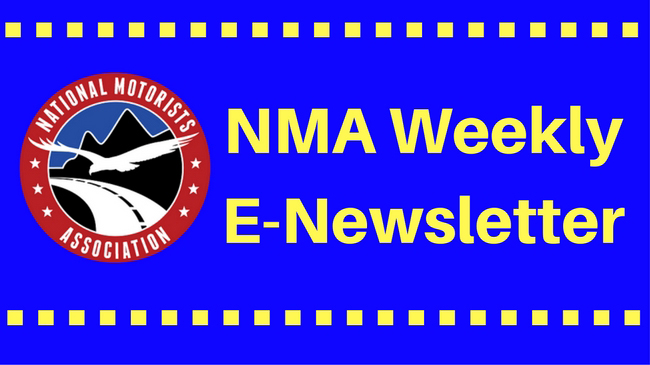
By Gary Biller, NMA President
The media has never shied away from peddling stories that sell. Often in doing so, the truth gets kicked to the curb or run over. Such is the case in the current lockdown climate where sensationalistic headlines scream that 100+ mph super speeders are taking advantage of less-crowded roads across the country in the face of more people staying at home during the coronavirus pandemic. The evidence presented to make that case is often more anecdotal than quantitative, and misleading if not completely wrong.
A few of those headlines from late April:
Traffic rates drop to half, motorists speeding more often
Blufield Daily Telegraph (West Virginia)
Washington sees rise in speeding on empty freeways
Mynorthwest.com (Washington State)
The pandemic pace: A look at congestion-free speeding and its risks
Smartcitiesdive.com
To be fair, The Washington piece references reporting from the California Highway Patrol that nearly 2,500 tickets were issued in March to drivers going 100 mph or greater. But let’s put that in perspective. That outlier ticketing rate involves less than 0.01 percent of the 26 million licensed California drivers. That rate is even tinier when the many out-of-state drivers on California roads are factored in. Meanwhile, the >99.99 percent of motorists driving sensibly are tainted by the widespread, distorted reporting.
The premise of the SmartCitiesDrive.com article is significantly different than what the data show in the article. They don’t indicate significant speeding on the corridor but do provide evidence that speeds return to normal free-flow rates when there is no congestion. It is misleading at best to tell the public that people are rampantly speeding due to lower traffic volumes.
A traffic-operations professional, who specializes in safety and mobility issues, reached out to the NMA in late April to express concern about serious misrepresentations being made about speeding during this COVID-19 crisis. His team at a safety laboratory will soon be releasing a study on traffic volume trends during the pandemic. He noted with respect to the conclusions drawn in the SmartCitiesDive.com story that, “What is happening is that without congestion, drivers are returning to free-flow speed on the highway. This is not dangerous, it is expected. . . The graph [in the article] clearly shows that the highest average speed is about 65 mph. People are not super speeding. They are merely able to drive at the same speed they usually do when there is no traffic on the road.”
The results of his team’s study and related observations tell a more nuanced tale than what many media outlets are weaving.
- Traffic volumes on freeways have decreased by 40 percent in the region studied, consistent with research findings from other states,
- Average vehicle speeds have not significantly changed, indicating that most people are continuing to drive the speeds they are comfortable with (hence why the 85th percentile speed is an appropriate measure for setting speed limits),
- The volume reduction is primarily passenger vehicle traffic. With more trucks on the road, average speeds often decrease,
- With less traffic, police will see more individual cars driving and fewer platoons. This makes it easier to place focus on specific vehicles and more likely for individual cars to be perceived as going faster than they are.
Anecdotes and preconceived notions are a replacement for data for too many people and media outlets, particularly when there is a narrative to sell. The NMA and its members must continue to push back on the traffic-speed misinformation being spread, particularly during the special travel circumstances during the current pandemic.



